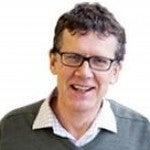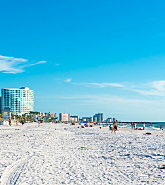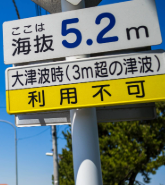Sendai is a city of a million people 2 hours north of Tokyo on the Shinkansen bullet train. From March 14-17, 2015 it will attract seven thousand people to the 3rd UN World Conference on Disaster Risk Reduction (WCDRR). Twelve heads of state (including one king and one emperor), seven prime ministers and 135 ministers and vice ministers, will be present to launch a fifteen year program of coordinated action around disaster risk reduction.
The conference is being hosted in Sendai because of the city’s recent experience of a mega-catastrophe. Just four years after the great Tohoku earthquake and tsunami in March 2011 and the coastal villages adjacent to Sendai still bear the scour marks where the great tsunami surged inland through the pine forests, removing many buildings off their foundations.
The original International Decade for Disaster Risk Reduction ran from 1990-1999. The second decade from 2005-2015, renewed at Kobe ten years after its devastating 1995 earthquake, was called the Hyogo Framework for Action. The continuation of this international program is currently designed to last for fifteen years. The fact that the frameworks have been renewed reflects reality—while there have been successes for particular regions and perils, the broader goals of worldwide disaster risk reduction have not been met. For example, the 2011 Tohoku earthquake was not anticipated, and as a result had grievous consequences in terms of loss of life and damage to the Fukushima nuclear power plants.
RMS will have four people at the Sendai WCDRR conference. We have obtained a coveted presentation on the main IGNITE stage—the equivalent to a “TED talk.” I will also be speaking on two panel sessions, one organized by The Geneva Association and Tokio Marine, “Insurance as contributors to problem solving and impact reduction,”and a second on the launch of the global set of catastrophe models developed by the UNISDR agency, for which RMS has provided high-level input. We have offered to host these worldwide UNISDR catastrophe models on RMS(one), which will open up access to the models for public officials in developing countries.
We have also worked on a couple of papers (for example, ‘Setting, Measuring and Monitoring: Targets for Disaster Risk Reduction: Recommendations for post-2015 international policy frameworks’) articulating how to measure progress in disaster risk reduction. At present, international frameworks have shied away from setting numerical commitments. We have argued that only probabilistic methods, which simulate thousands of possible events, can show baseline levels of risk, what actions will achieve progress, and whether targets have been achieved. We take Michael Bloomberg’s quote from the foreword to the Risky Business report: “if you can’t measure it, you can’t manage it.”
The work by the UNISDR on catastrophe modeling highlights the accelerated recognition of the role of modeling in managing and reducing disaster risk. There is now a real focus on public-private partnerships in achieving disaster reduction. With RMS’ rich and deep experience in catastrophe modeling, there is much we can offer to these expanded applications. For users of models in governments, public organisations and NGOs, models are required to:
- explore how to manage a wide range of potential disasters
- perform cost benefit analyses of alternative actions to reduce risk of loss of life or economic impacts
- explore potential implications of climate change
- explore holistically the potential for significant financial shocks to national economies
If you are attending the conference, come and visit us at our booth on the 6th floor of the Sendai International Center where we will be distributing information about our proposals for disaster risk modeling, and articulating our role as leaders in catastrophe risk modeling. It will be a highly publicized event with 500 journalists and around 300 private sector members, including several of our key clients. We will also be meeting with other organizations with which we are affiliated, including the UN Principles for Sustainable Insurance and the Rockefeller Foundation’s 100 Resilient Cities initiative.
We look forward to sharing more insight after the event.






